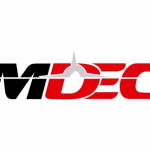by Subramanian Iyer, Oracle Insight and Customer Strategy -The movement to digital is the most important trend impacting business in the last few years. According to McKinsey Consulting, “Digital is fundamentally shifting the competitive landscape in many sectors. It allows new entrants to come from unexpected places. We’re seeing banks get into the travel business in some countries. We’re seeing travel agents get into the insurance business. We’re seeing retailers go into the media business. So your competitor set is not what it used to be.”

In 2016, companies will continue to use technology to support digital transformation through a five-pronged approach of social, mobility, the Internet of Things, cloud computing, and analytics. However, technology is only an enabler of digital transformation—it is business that needs to drive strategy for organizations.
So, in 2016, what will be the key considerations for organizations that need to transform digitally?
1. Companies need to commit to transforming digitally: This is not a pilot project. Rising customer expectations and a high degree of competition from startups have made digital transformation a necessity. Executive management must champion digital strategies, and IT must be agile enough to carry them out.
Digital strategies can succeed only when front-office digitization is closely integrated with optimized core environments.
2. IT will be bi-modal: Customer service expectations are so high that traditional IT is barely able to keep pace with the changes that business needs. Traditionally, IT transformation projects run into months, if not years. Digital transformation, on the other hand, has agility as its primary requirement as businesses compete to service the mobile generation. Bi-modal IT, or two-speed IT, is a potential solution to this problem. Gartner defines bi-modal IT as the practice of managing two separate, coherent modes of IT delivery—one focused on stability and the other on agility. This allows organizations to support existing IT deployments even as they transform digitally at a rapid pace. Deployment models using the cloud play a significant role in improving both agility and flexibility. However, bimodal IT brings with it challenges around people and processes that need to be carefully operationalized in enterprises that are going through the transformation process.
3. Transformation will need integration: Digital strategies can succeed only when front-office digitization is closely integrated with optimized core environments. The integration between front-end and back-end systems plays a critical role even as the core systems get further optimized and flexible. This allows for easier modification of business models that could potentially change the manner in which organizations do business.
4. Data will still be king: Digital encompasses the Internet of Things, big data, and social—each of which is expected to generate a significant amount of data that needs to be analyzed. This requires even more effective data management than before. Traditional frameworks that are used to manage enterprise data need to be extended to accommodate the different data forms that are now beginning to make their presence felt. Customers expect real-time service, and this, in turn, requires exposing the right data at the right time to them. Real-time reporting now defines decision-making; companies that ignore this trend do so at their own peril.
5. Security will continue to be paramount. With more and more content available online, the security of data is more important than before. The role of employees as brand ambassadors of their companies has increased as social media gains prominence as a marketing and recruitment tool. It is vital to understand what kind of official data is shared externally by employees who use social media from the workplace or home. This requires linking employees’ social media accounts with their enterprise accounts. As digital identities become more pervasive through the increasing usage of devices, it is important that organizations keep pace with emerging technologies that allow for better security. An emerging technology in this space is blockchain, which allows for not just more secure identities, but also significantly increases data security through its distributed ledger mechanism.
MARKETING Magazine is not responsible for the content of external sites.









